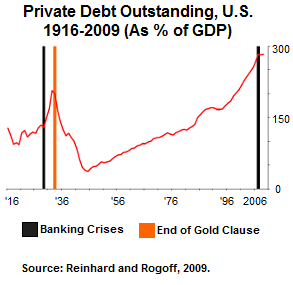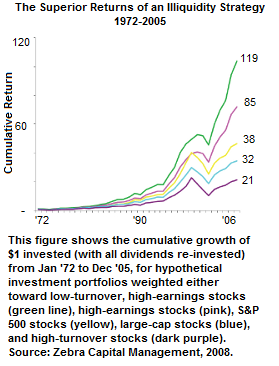CHICAGO—Clad in dark jacket and turtleneck, Moshe Milevsky beguiled the Retirement Income Industry Association’s conference Tuesday with a presentation about investor behavior on Vulcan, the Class M planet where Mr. Spock was born.
The specific topic was “longevity risk aversion.” You may never have heard of it, and neither had most of the 135 or so attendees at RIIA’s spring meeting, which is to its industry what the Democratic National Convention is to politics—at least in its diversity of viewpoints.
Milevsky, the well-known goateed Toronto-based finance professor and writer, asked the gathering at Morningstar/Ibbotson headquarters to imagine a Planet Vulcan where the inhabitants had only one investment option, risk-free inflation-protected bonds with a real return of 2% to 2.5%.
Vulcans differed, however, in their fear of outliving their money and in their access to pensions. Milevsky’s advice to them was that the less they feared outliving their money and the larger their pension or annuity income, the more they could spend each year in retirement.
That may sound reasonable on its face. But it collides like a maverick asteroid with two pieces of conventional wisdom: that 4% is the proper asset drawdown rate in retirement and that stocks are the proper investment for people who are afraid they might survive long enough to exhaust their assets.
Advertisement
“Don’t scare people by saying you have to invest in stocks if you expect to live to age 95,” said Milevsky, who is the author of, most recently, Your Money Milestones: A Guide to Making the 9 Most Important Financial Decisions of Your Life (FT Press, 2010).
‘Floor, Then Upside’
Not everyone in Morningstar’s corporate auditorium—which its striking view of the 50-ft sculpture by Picasso in Daley Plaza and Chicago’s pillared, classical-revival City Hall—may have accepted Milevsky’s assumption that people who are averse to longevity risk are equally averse to financial risk.
But that seemed to be fine with RIIA president Francois Gadenne, who confessed in his conference-concluding remarks Tuesday that he loves a good intellectual tussle. The same might be said for most of RIIA’s eclectic and distinguished membership, which includes insurance company executives, mutual fund executives, economists and other academics, software vendors and income-oriented advisors.
Its sixth spring conference is a turning point for RIIA. It marks the most public introduction so far of the books, training program, and professional designation—the Retirement Management Analyst—that RIIA leadership has been developing for more than a year.
The philosophy behind the designation is “build a floor, then create upside.” As a group, RIIA believes that pre-retirement or “accumulation” investing is fundamentally different from investing during retirement. In the latter, reducing risk becomes paramount.
This idea doesn’t simply mean adopting a more conservative asset allocation or other wealth preservation tactics in retirement. It means that retirees should lock down a safe, adequate income—from pensions, Social Security, annuities, laddered bonds, or structured notes, etc.—before putting money at risk.
[See accompanying feature story “Floor It!” on Michael J. Zwecher’s new book, Retirement Portfolios: Theory, Construction and Management (John Wiley & Sons, 2010), which is required reading for the RMA designation.]
This concept is somewhat heretical. It strikes at Jeremy J. Siegel’s bullish dogma that, on average, stocks pay off in the long run. RIIA contends that on average isn’t good enough in retirement, where an ill-timed fat-tail event can mean a diet of cat food for the elderly. Stocks, many RIIA members might concede, aren’t necessarily bad for retirees. But they aren’t good for money that retirees can’t afford to lose.
It’s no coincidence that, more so than most retirement industry groups, RIIA has academics and economists among its members. Their conservative viewpoint reflects their focus on public policy rather than the exciting, but ultimately zero-sum outcomes produced by the financial markets.
On the other hand, that philosophy doesn’t preclude profits, and the stocks-are-just-for-mad-money idea was implicit to some extent in most of the presentations at the conference, including the presentations by leading marketers of retirement products and planning tools.
Income products and processes
On the product side, for instance, Tom Streiff of PIMCO talked about his firm’s TIPS funds, which pays out a predictable, inflation-protected income over either 10 or 20 years. Tom Johnson of New York Life followed with a discussion of the mortality credits embedded in immediate annuities.
On the planning side, Jack Sharry of LifeYield explained his company’s proprietary strategies for tax-efficient decumulation. Boston University economist Larry Kotlikoff presented his widely-used ESPlanner software, which focuses on maintaining a consistent standard of living in retirement through “consumption smoothing.”
Whether stocks pay off in the long run was the central issue in a panel discussion on the usefulness of time-segmented retirement planning methods. “Time-segmented” or “bucket” methods generally include the many strategies that dedicate certain assets in a retirement portfolio to fulfilling income needs during specific segments of time, usually ranging from one to five years.
The panelists—Gary Baker of Cannex Financial Exchanges, Sherrie Grabot of Guided Choice, Tom Idzorek of Ibbotson, Larry Kotlikoff and moderator Richard Fullmer of Russell Investments—were asked whether it makes sense to assign progressively riskier assets to the buckets, so that a bucket designated for liquidation in 20 years, say, could safely be stuffed with emerging market small-cap stocks on the presumption that they are likely to “mature” in value by then.
This narrow question was a bit of a straw man, and the discussion was not conclusive. But it seemed to settle on the fact that many people do find time-segmentation or buckets to be a useful framework for retirement income planning. And it was noted that bucketing doesn’t require investing in stocks, or the belief in stocks-for-the-long-run, to be useful.
In his presentation, Milevsky approached the risky assets issue from a different angle. He suggested that there’s an “internal contradiction” in telling people who are worried about outliving their assets to put more money in equities. “You can’t deal with extreme aversion to longevity risk only with stocks,” he said.
His slide show, and the paper it was based on, “Spending Retirement on Planet Vulcan,” suggested—somewhat counter-intuitively—that adding annuities to a retirement portfolio is a better way to enhance the retirement drawdown rate and to make your money last than adding stocks.
“If you worry about living, which is different from expecting to live,” he told RIJ, “then you should increase your allocation to annuities rather than gambling on stocks, which is inconsistent with said risk aversion.”
© 2010 RIJ Publishing. All rights reserved.






